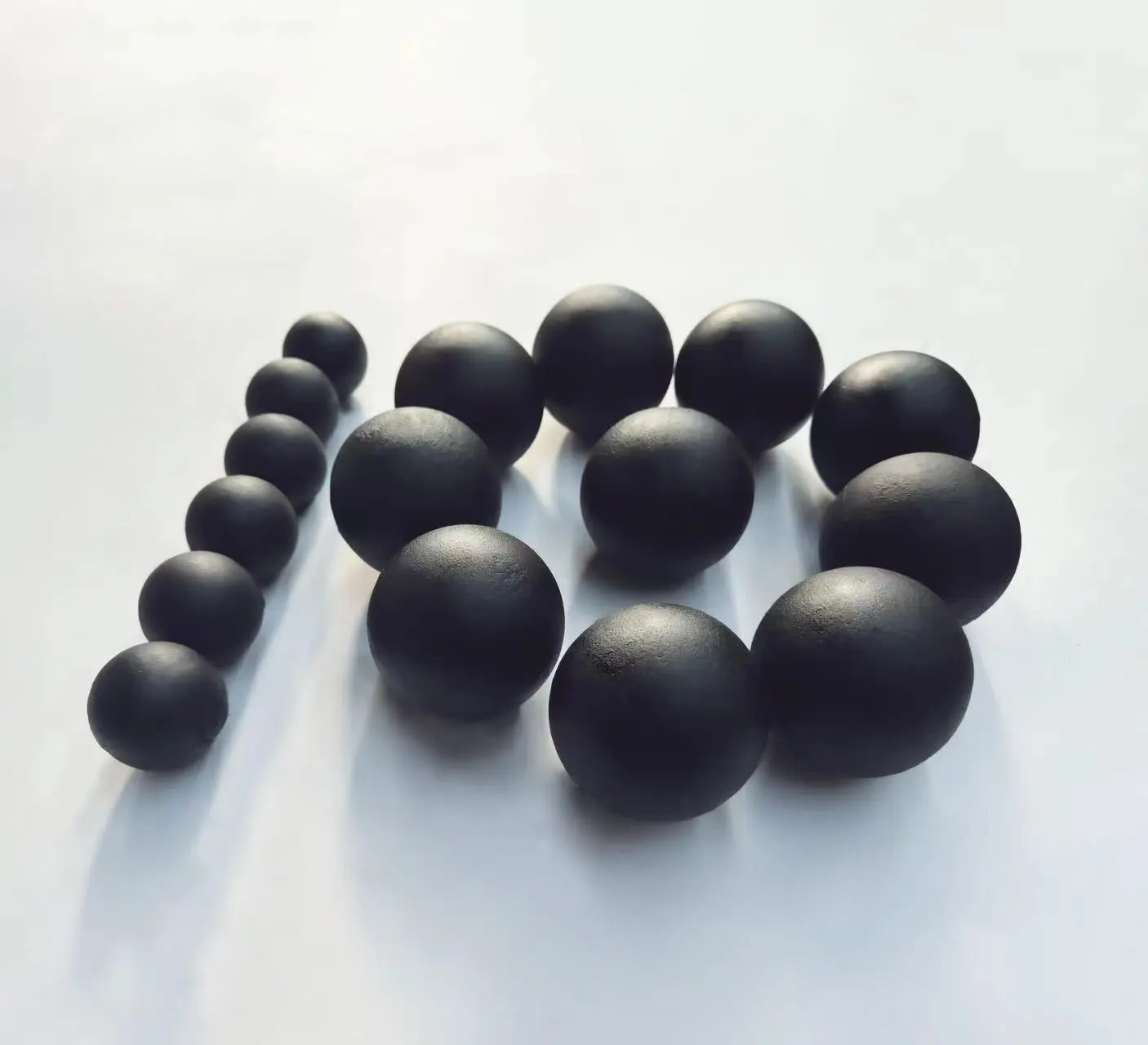Superior Durability and Wear Resistance
One of the most significant benefits of casting grinding balls is their exceptional durability and wear resistance. These balls are manufactured through a meticulous casting process, which allows for precise control over the material composition and structure. The result is a grinding media that can withstand the harsh conditions of industrial grinding applications.
The high-quality alloys used in casting grinding balls, often incorporating chromium and other wear-resistant elements, contribute to their longevity. This enhanced durability translates to less frequent replacements, reducing downtime and maintenance costs for industrial operations.
Moreover, the consistent wear patterns of the product ensure a more uniform grinding process over time. This uniformity leads to better particle size distribution in the final product, which is crucial in industries such as cement production, mining, and ceramics manufacturing.
Projecting crushing balls are designed to give excellent strength and wear obstruction, fundamental for requesting modern applications. They are able to withstand extreme conditions thanks to their robust design, which significantly reduces wear during grinding operations. This solidness means a more drawn out life expectancy, limiting the requirement for regular substitutions. Therefore, organizations benefit from diminished functional disturbances and expanded efficiency, as these crushing balls keep up with execution levels overstretched periods, guaranteeing solid results in different crushing conditions.
Customizable Properties for Optimal Performance
Another compelling advantage of casting grinding balls is the ability to customize their properties to suit specific grinding requirements. The casting process allows manufacturers to adjust the chemical composition and heat treatment of the balls, tailoring their hardness, toughness, and impact resistance to match the needs of different industries and applications.
For instance, in the cement industry, where abrasive materials are ground, casting grinding balls with higher chromium content might be preferred for their superior wear resistance. In contrast, for softer materials, balls with a different alloy composition might be more suitable to balance grinding efficiency and media wear.
This customization extends to the size of the grinding balls as well. Casting allows for the production of a wide range of sizes, from small balls for fine grinding to larger ones for coarse grinding applications. This versatility makes casting grinding balls adaptable to various stages of the grinding process, optimizing efficiency across different grinding circuits.
A critical benefit of projecting crushing balls is their adjustable properties, permitting producers to tailor them for explicit execution needs. By changing hardness, size, and surface, they can advance the crushing balls for various materials and functional necessities. This degree of customization upgrades crushing proficiency as well as guarantees that the balls perform at their best in unambiguous applications, prompting further developed results and more prominent fulfillment for organizations that depend on exact crushing arrangements.
Cost-Effectiveness and Operational Efficiency
While the initial cost of casting grinding balls may be higher compared to some alternatives, their long-term cost-effectiveness is undeniable. The extended lifespan of these balls means fewer replacements over time, reducing not only the direct costs of purchasing new media but also the indirect costs associated with production downtime during media changes.
Furthermore, the consistent performance of casting grinding balls contributes to operational efficiency. Their uniform wear ensures a stable grinding process, which can lead to more predictable outcomes and easier process control. This stability can result in energy savings, as the grinding process remains efficient over a longer period without the need for frequent adjustments.
The superior grinding efficiency of casting grinding balls also means that less media is required to achieve the same grinding results compared to some other types of grinding media. This reduction in media consumption can lead to significant cost savings over time, especially in large-scale operations.
Additionally, the use of high-quality casting grinding balls can contribute to improved product quality. The consistent size reduction and particle shape achieved with these balls can enhance the properties of the final product, potentially leading to higher value and customer satisfaction.
Casting grinding balls of high quality provide significant cost savings and operational efficiency. Because of their superior durability, they need to be replaced less often, which saves money on maintenance and reduces downtime. Furthermore, enhanced crushing cycles further develop throughput and limit energy utilization. By improving efficiency while holding costs under wraps, these crushing balls address an essential decision for organizations intending to accomplish functional greatness without settling on execution or quality.
Conclusion
Casting grinding balls offer a range of benefits that make them an attractive choice for many industrial grinding applications. Their superior durability, customizable properties, and long-term cost-effectiveness set them apart from other types of grinding media. By choosing casting grinding balls, industries can optimize their grinding processes, reduce operational costs, and improve product quality.
As the demands on industrial grinding continue to evolve, the adaptability and performance of casting grinding balls position them as a valuable tool for meeting these challenges. Whether in cement production, mining, or other industries requiring efficient material size reduction, casting grinding balls provide a reliable and effective solution.
For those looking to enhance their grinding operations with high-quality casting grinding balls, NINGHU offers a range of options tailored to various industrial needs. With over thirty years of experience in wear-resistant materials production, NINGHU provides casting grinding balls and cylpebs in different sizes and chromium contents, suitable for cement and building materials, metallurgical mining, thermal power generation, magnetic materials, and other industries. To learn more about their products and how they can benefit your operations, contact them at sunnyqin@nhgrindingmedia.com.









